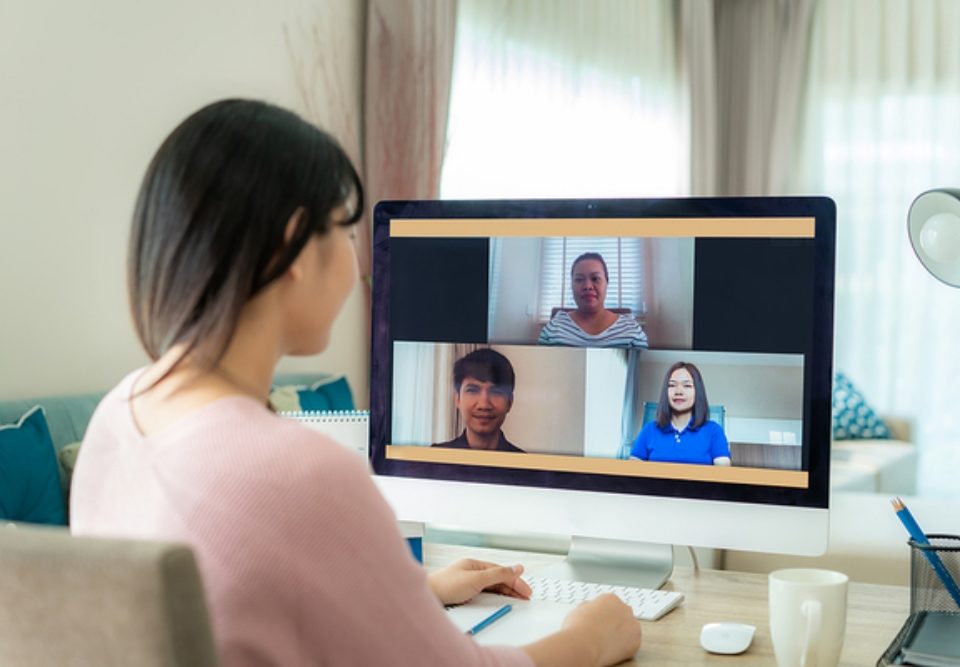
How to Improve Employee Productivity With Monitoring Software
August 28, 2020
How Do You Manage a Call Center Remotely?
September 11, 2020A Guide to Managing Remote Employees Effectively

COVID-19 has completely transformed the global workforce. More than half (57%) of businesses offer remote work in some capacity.
Keeping your enterprise competitive in 2020 (and the future) will depend on your ability to adapt to a remote marketplace.
Protect and manage your remote workforce effectively with a comprehensive employee monitoring system.
1. How to Successfully Transition your Team to Remote Working.
-
-
Identify the team’s vision.
-
Your remote teams should be a direct reflection of the brand as a whole.
Consider the corporate mission.
Build an efficient strategy that keeps the company’s goals in mind.
2. Establish role objectives.
-
-
Delegate or organize tasks.
-
Judging a fish on its ability to climb a tree is fruitless, just like basing an employee’s aptitude on their weaknesses instead of their strengths.
Consider what every employee has to offer.
Understand how an employee’s skill set can add to the growth of the group as a whole.
Monitoring software allows you to see when employees are idle online, how long they spend on each session, and if there are any drops in productivity.
Focusing on how your employees are working can give you a strong foundation to optimize your project management plan.
Set objectives.
Moving your staff to a virtual work environment can improve employee satisfaction by up to 24% across your entire organization.
Lack of direction can cause employees to become complacent and restless.
Using the data collected by monitoring software, you can build a plan that takes every worker’s abilities into account.
If you notice that a worker’s activity significantly slows down during data entry tasks, you can quickly reassess their workload and redistribute tasks as needed.
This tracking method also provides helpful information about:
- Worker speed
- Turnaround time
- Project completion
Using this quantitative data, managers can accurately set realistic expectations for every member of the team.
Helping off site teams meet objectives reliably will significantly impact any company’s bottomline.
3. Establish online processes.
-
-
Address communication issues.
-
Communication is single-handedly the most significant factor when it comes to collaboration.
Helping your offsite and onsite teams work together effectively is the backbone of any successful enterprise.
Early intervention is the key to preventing behavioral or technical problems from impacting your bottomline.
Computer monitoring software uses responsive AI-enabled processes to alert users when the system detects:
- Attempts to visit blocked or filtered sites
- External harddrive/USB insertion
- Software and application downloads
- Unauthorized users or third-party access
- Drops in activity or extended idle sessions
- Specific keywords in browser tabs, chats, messages, and more
Having concrete, irrefutable data to create personnel procedures is an effective way to keep employees and employers protected without negatively affecting office morale.
More than half of the current workforce believes that the use of employee monitoring software will negatively affect the workplace. Contrary to the popular belief that monitoring systems impede the workplace environment, using computer tracking to keep employees safe and productive can improve your (virtual) company culture.
Create effective schedules.
One of the reasons why telecommuting will outlast the current COVID-19 pandemic is the flexibility it provides. Working remotely makes it possible for people to invest in their work/life balance like never before.
Measuring peaks in worker activity is one way to determine the best schedule for your offsite teams. This also makes it easier for managers to adjust to unexpected schedule changes or absences with less stress.
-
-
Prevent distractions.
-
Do you have a protocol for these unexpected at-home disruptions?
- Interruptions during video conferences and presentations
- Loud background noise
- Pets, children, and family members inhibiting video chats and calls
- Home repairs and personal emergencies
Working from home provides a whole new level of distractions, so it’s important to build an online and physical workspace that minimizes this risk.
On the other hand, working from home can be an immediate improvement for some employees. In a recent survey, 62% of participants reported an increase in productivity due to a quieter work environment.
Establishing procedures regarding video conferencing and how time can be spent during work hours will help to keep employees focused and on task. This will also prevent security risks from impeding your company, from data loss to unauthorized use of proprietary information.
Suggest office space parameters and rules based on the worker’s job function, such as a “closed-door” policy during certain hours.
Establishing clear boundaries prevents household distractions from eating up your employees’ workday.
4. Build a trust-driven environment.
-
-
Prioritize collaboration.
-
Approximately 57% of the U.S. workforce has worked remotely during the COVID-19 pandemic. But, more than 18% of employees work remotely on a full-time basis.
This has led to an increase in communication issues and poor collaboration across a wide range of industries.
Lack of interpersonal contact has created a morale slump among big and small companies around the world, and our growing telecommuter market is no different. However, video chats and instant messaging can go a long way when used correctly.
Using a monitoring system to verify and track the programs your employees use will keep communications uninhibited and secure.
Encrypted cloud-based storage and keylogging give everyone a safe way to communicate and share with each other on and off company networks.
-
-
Hold team members accountable.
-
Amid the ongoing pandemic, many employers worry about maintaining production standards. More than 73% of American workers express some level of distrust against the use of technology in the workplace. This is primarily due to the use of surveillance, which can make employees feel like they’re being “spied on” or micromanaged.
But, without onsite managers to keep them on task, employees are largely left to their own devices with all of the distractions that surround them at home.
Discrete monitoring software is a solid compromise that provides both freedom and security for both parties.
Workers are largely unaware and unaffected by what their computer is tracking, and employers are provided with concrete data to secure their investment in each worker’s salary.
5. Celebrate and reinforce skill set diversity.
-
-
Provide support for autonomous and collaborative workers.
-
There are a ton of benefits to working remotely, but freedom tops the list for 35% of American employees. Using a telecommuter-friendly business model gives you the ability to respond to every employee’s unique needs.
Some people like to work with little oversight, while others benefit from a higher level of support. But either way, about 99% of the current telecommuting workforce prefers working remotely.
Monitoring software gives managers a birds-eye view of their entire workforce, how everyone is performing, and which employees could use a helping hand.
-
-
Be flexible.
-
If you want your business to succeed amid the ever-changing remote marketplace, being adaptable and transparent will take your brand a long way.
Employee tracking can help you increase profits by streamlining existing processes and reducing redundancies. But, it’s also an affordable way to improve employee satisfaction, retention, and recruitment by allowing you to offer employees more flexibility.
Schedule fluidity, fast turnaround time, and seamless connectivity give employees the ability to work effectively from home. This means that managers need to be patient and understanding during the transition.
Providing a high level of support is the key for a successful rollout and adoption period, across the board.
This is the year to help your remote workforce thrive, but you need to have the right tools if you want to succeed in the 2020 marketplace.
Keep your online data safe while helping employees through the transition to telecommuting with a comprehensive remote employee monitoring system.




